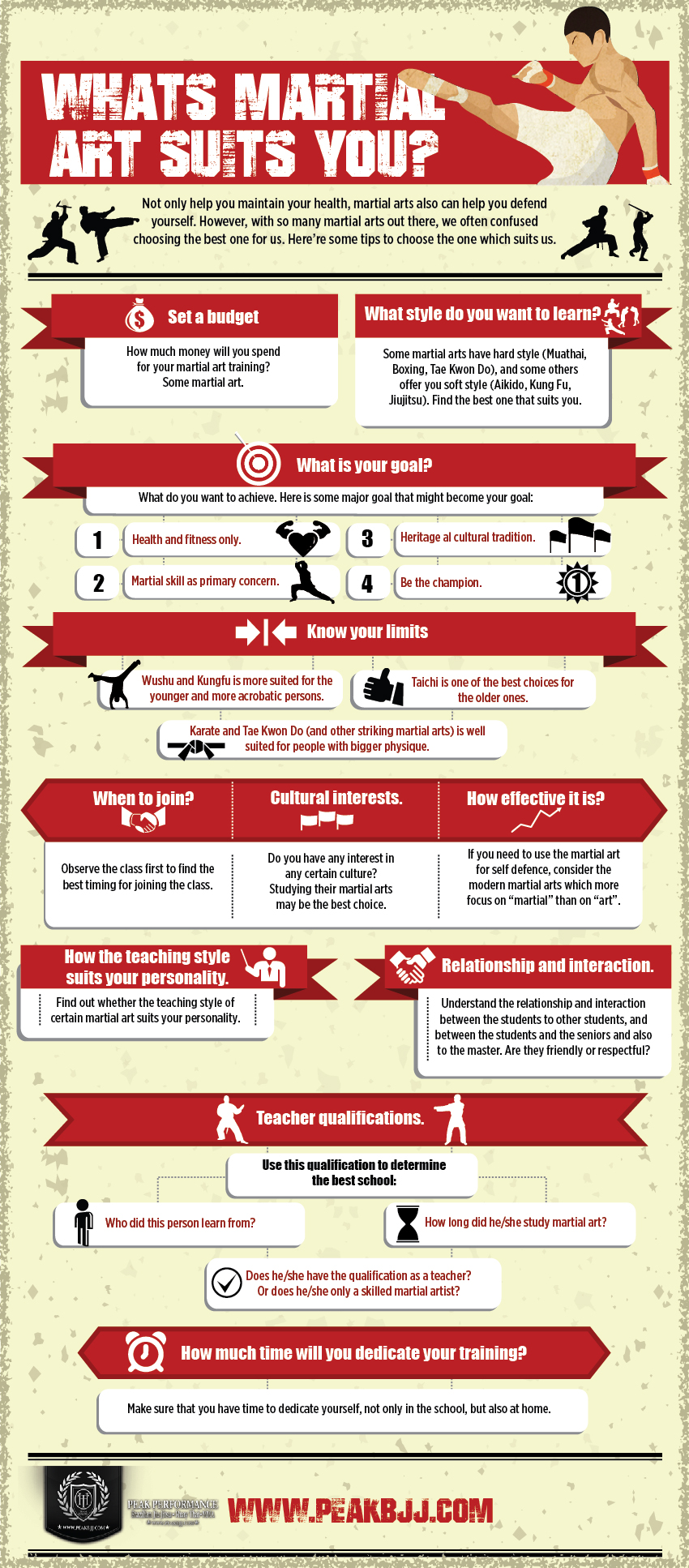Understanding The Range Of Standard Martial Arts Styles: Recognizing The Best Option For You
Understanding The Range Of Standard Martial Arts Styles: Recognizing The Best Option For You
Blog Article
Post Author-Freeman Mclaughlin
When it involves standard martial arts, locating the appropriate style can really feel frustrating. Each self-control offers unique ideologies and methods that cater to different rate of interests and objectives. Whether you're looking for Self-Defense, fitness, or mental self-control, there's a martial arts that can fulfill your demands. So, exactly how do you select the one that's ideal for you? Let's discover some prominent styles and what they can offer you.
Comprehending the Ideology Behind Martial Arts Styles
While many people see martial arts simply as a means of Self-Defense or physical fitness, understanding the much deeper ideology behind these styles can considerably improve your technique.
Each martial art personifies special principles and worths that lead you on and off the mat. For example, self-controls like martial arts emphasize respect and discipline, while others, like tai chi, concentrate on consistency and balance.
By diving right into these ideologies, you'll find exactly how they shape your mindset, improve your emphasis, and foster personal growth. Welcoming this philosophical aspect can help you establish resilience, perseverance, and a greater feeling of area.
Eventually, engaging with the underlying concepts behind martial arts can transform your trip from mere physicality to a profound, holistic experience.
Popular Standard Martial arts and Their Unique Benefits
Typical martial arts incorporate a diverse array of styles, each offering unique advantages that can boost your physical and mental health.
For example, Martial arts highlights striking techniques, improving your agility and self-discipline. Kids self-defense focuses on high-energy kicks, promoting flexibility and cardiovascular fitness. Judo teaches grappling and tossing strategies, promoting equilibrium and critical thinking.
On The Other Hand, Martial art combines fluid activities with reflection, increasing your emphasis and inner peace. Aikido stresses redirecting a challenger's power, boosting your awareness and dispute resolution skills.
Finally, Brazilian Jiu-Jitsu fixate ground fighting, constructing stamina and strength. By discovering these martial arts, you'll discover which method straightens with your rate of interests and objectives, enabling you to gain the distinct advantages each design has to provide.
Picking the Right Design Based Upon Your Goals and Passions
Finding the appropriate martial arts style for you includes considering your individual goals and interests.
If you're aiming to improve physical fitness, styles like Tai Chi or Kickboxing could suit you. For Self-Defense, think about Krav Maga or Brazilian Jiu-Jitsu. If simply click the following internet site drawn to self-control and tradition, Karate or Taekwondo could be your best option.
Consider whether you favor an even more liquid, stylish strategy or an effective, striking design.
Likewise, take into consideration the area and environment of the dojo or studio-- do you want an affordable environment or a supportive, family-like setting?
Take the time to attempt a couple of classes, talk with trainers, and engage yourself in the culture.
Eventually, pick a design that delights you and aligns with your aspirations.
Verdict
In your trip via standard martial arts, bear in mind that each design uses an one-of-a-kind course to individual growth and self-discovery. By checking out various dojos and connecting with instructors, you'll discover the method that reverberates with you. Whether you seek Self-Defense, physical fitness, or a much deeper philosophical link, there's a martial arts waiting to improve your life. Accept the experience, and allow your passion guide you to the best design that fits your objectives
